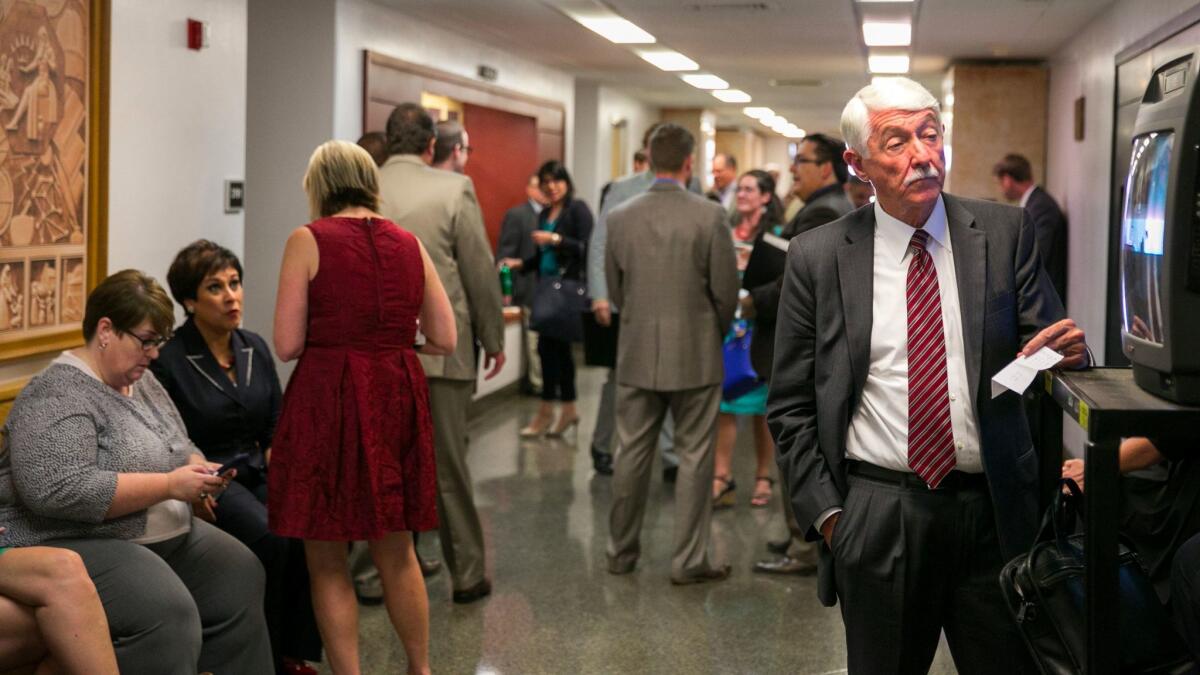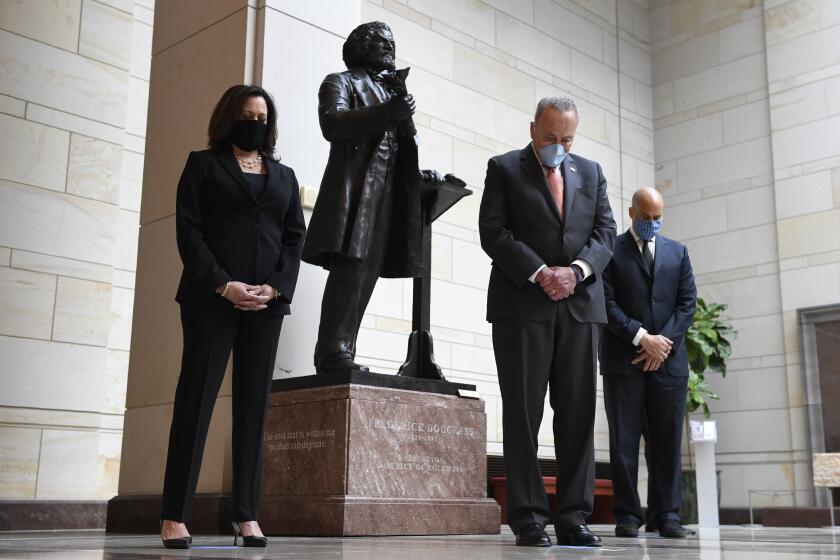Column: Political Road Map: There are more than 15 lobbyists for each lawmaker in Sacramento

The first week of December after every election sparks a policy and political awakening in Californiaâs state Capitol for the three houses of the legislative branch of government. Yes, three.
Civics books list only the state Senate and Assembly, but then there are the professional lobbyists who cheekily refer to themselves as the âthird house.â
For newly elected members of the Legislature, itâs a welcoming party that can be intimidating: the official registry lists 1,871 professional lobbyists, more than 15 for every legislator.
All of that lobbying doesnât come cheap. State records show $551.9 million in lobbyist expenditures for all but the final two months of the 2015-16 legislative session. Two decades ago, total state government lobbying cost $266.9 million.
The stereotype may be powerful corporations or labor unions towering over everyone, but the biggest spenders are local governments â government lobbying government, to the tune of more than $84 million in the last two-year legislative session. By comparison, oil and gas companies spent less than half that amount. Agriculture interests spent just 10 cents to every dollar spent by cities, counties and statewide government associations.
Local officials often feel they need more Sacramento muscle beyond their legislators. City council members in Glendale were told in a 2013 staff report that lobbyists would help âgain support from key public officials and policy makers on decisions that directly impact the city.â In the most recent legislative session, Glendale paid more than $166,000 for lobbyists. The city of Los Angeles spent about $1.6 million.
Itâs unclear what the new Democratic supermajority can achieve in Sacramento Âť
But even with the outsized role it plays in the world of political influence, lobbying isnât so easy to track. Public disclosure forms are filed only every three months and offer scant evidence of how much was spent to sway opinion on any particular bill or lucrative government agency contract.
The biggest boost to transparency, which wasnât very big at all, came earlier this year when state ethics officials required new details on âpayments to influence,â meaning money spent on items other than lobbyist salaries.
As a result, the public can now see that the California Teachers Assn. spent $59,600 this summer on polling, though it doesnât have to disclose the issues asked about. People also can see that PG&E made a $25,000 donation to the Oakland School for the Arts, founded by Gov. Jerry Brown during his time as the cityâs mayor.
Bigger bucks were spent by NextGen climate, the activist organization led by Democratic billionaire Tom Steyer â $7.1 million on advertising in just three months during last summerâs debate over broad new state laws to combat climate change. Though the new disclosure rules help, much of the spending is lumped into broad categories.
The bigger challenge is when influential insiders tiptoe up to (but not over) the line of what constitutes âofficialâ lobbying and never disclose their activity. State regulations put the threshold at $2,000 or more a month in payments to have direct contact with any official who makes legislative or government decisions.
Whether the definitions are strict enough is an ongoing debate. And some legislators end up with a vested interest in the issue: When forced from office due to term limits, a number of them ultimately end up as the lobbyists who will offer those hearty handshakes when the 120 members of the other two houses arrive in Sacramento this week to be sworn in for the new term.
Follow @johnmyers on Twitter, sign up for our daily Essential Politics newsletter and listen to the weekly California Politics Podcast
ALSO:
Political Road Map: Revamped primaries changed California politics, but not like everyone thought
Political Road Map: That love-hate relationship with California ballot initiatives
Updates on California politics
More to Read
Get the L.A. Times Politics newsletter
Deeply reported insights into legislation, politics and policy from Sacramento, Washington and beyond. In your inbox three times per week.
You may occasionally receive promotional content from the Los Angeles Times.











